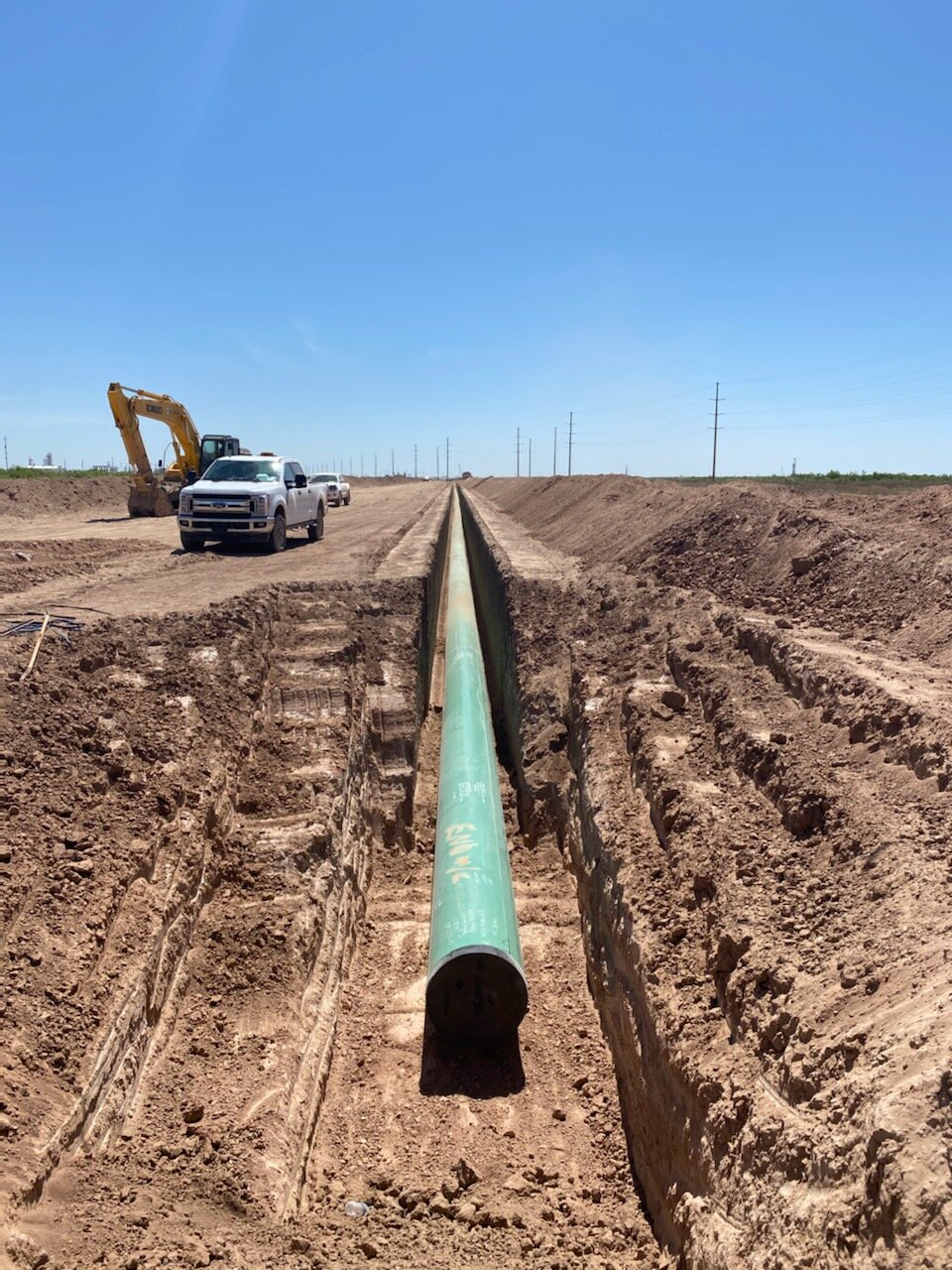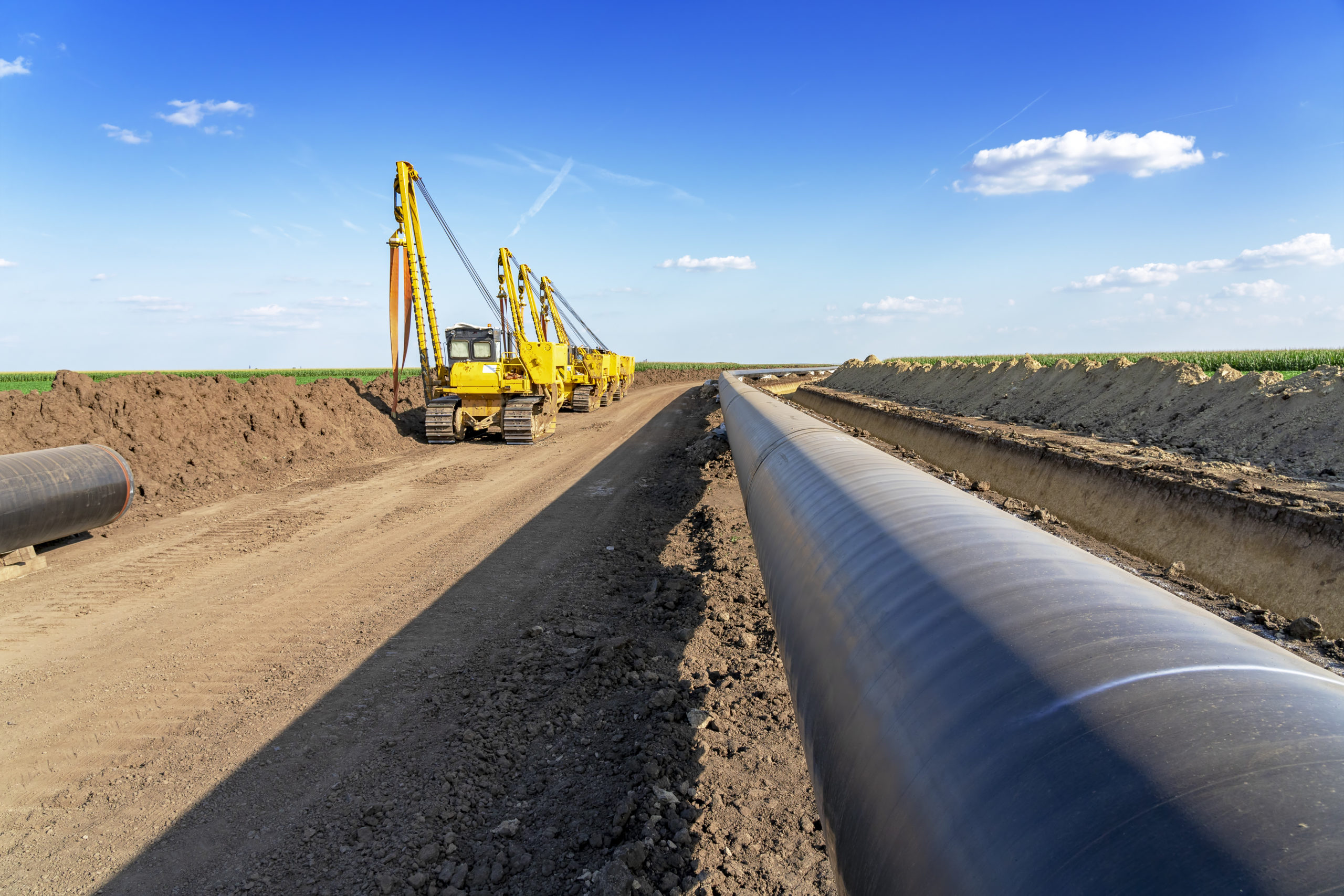Ways to save money with a Midland pipeline construction company without sacrificing safety
Comprehending the Trick Functions of Pipeline Providers and Their Influence On Efficiency
Pipeline solutions play an essential duty in numerous industries, influencing operational efficiency noticeably. Trick attributes, such as sophisticated surveillance innovations and upkeep techniques, are vital for lessening downtime. Additionally, governing conformity assurances safety and ecological defense. However, the interaction in between layout, facilities, and financial variables can make complex these procedures. Comprehending how these elements influence total performance raises vital inquiries regarding best methods and future growths in the field.
The Function of Innovation in Pipeline Monitoring
As improvements in modern technology proceed to develop, the relevance of reliable pipe tracking has actually come to be significantly evident. Modern pipeline systems count on advanced monitoring devices that boost functional effectiveness and safety. Technologies such as real-time information analytics, sensors, and drones offer drivers with immediate insights into pipeline problems, allowing them to discover leakages, corrosion, and other prospective issues prior to they intensify into significant issues.
Moreover, the assimilation of Web of Points (IoT) devices has transformed conventional monitoring techniques, allowing for constant security and automated reporting. This proactive method not just minimizes risks however also maximizes upkeep routines and resource appropriation. Furthermore, advanced software program systems facilitate data visualization and interpretation, empowering decision-makers to respond promptly to abnormalities. Jointly, these technological technologies not only enhance pipe honesty however likewise foster environmental stewardship by mitigating the potential impact of leakages and spills.
Maintenance Methods for Enhanced Effectiveness
Efficient maintenance techniques are crucial for enhancing pipe efficiency. Implementing anticipating upkeep methods, adhering to routine assessment protocols, and establishing robust emergency situation response plans can greatly improve functional reliability. These techniques not only decrease downtime however additionally contribute to the overall safety and honesty of pipe systems.
Anticipating Upkeep Strategies
Anticipating maintenance techniques are significantly recognized for their ability to boost operational performance in pipe solutions. By leveraging data analytics and keeping track of technologies, these strategies make it possible for operators to prepare for equipment failures prior to they occur. This proactive approach minimizes unexpected downtime, decreases upkeep expenses, and prolongs the life-span of important possessions. Sensors and IoT gadgets play a crucial function in accumulating real-time data, allowing for the analysis of tools health and efficiency trends. Equipment knowing algorithms assess this data to recognize patterns and predict potential problems. Pipeline operators can arrange upkeep tasks during non-peak times, maximizing source allowance and making sure constant procedure. Inevitably, the adoption of anticipating upkeep fosters a more trusted and efficient pipeline infrastructure.

Routine Assessment Protocols
Routine evaluation procedures act as a cornerstone of maintenance approaches targeted at boosting effectiveness in pipeline procedures - Creek Pipe local contractor. These protocols entail organized assessments of pipeline stability, concentrating on finding possible issues prior to they rise. Routine assessments generally consist of aesthetic analyses, leak detection technologies, and stress surveillance to assure peak performance. By sticking to recognized schedules, drivers can recognize deterioration, material wear, or obstruction, therefore lessening downtime and repair service costs. In addition, information gathered during evaluations can inform anticipating upkeep initiatives, permitting an aggressive technique to pipe administration. Inevitably, regular examinations not only extend the life expectancy of pipeline facilities yet likewise contribute to safer and much more dependable transport of sources, strengthening general operational efficiency
Emergency Situation Feedback Planning
Emergency situation reaction planning is important for maintaining efficiency in pipeline procedures, guaranteeing that operators are prepared to attend to unexpected cases promptly and effectively. A well-structured emergency situation action plan includes clear procedures, assigned roles, and interaction strategies to reduce threats connected with pipe failings. Normal drills and training improve team preparedness and acquaint employees with emergency situation procedures. Additionally, having conveniently available sources, such as spill containment tools and emergency contact lists, can significantly lower action times. By incorporating real-time surveillance technologies, drivers can promptly determine and respond to problems, minimizing environmental influence and operational downtime. Eventually, a complete emergency situation feedback strategy not only safeguards properties and employees yet likewise enhances the general efficiency of pipeline services.
Governing Conformity and Security Standards
Regulatory compliance and security criteria play an important function in the pipeline services market. Creek Pipe local contractor. Abiding by market regulations guarantees that companies apply effective security protocols and risk management approaches. This commitment not only safeguards employees and the atmosphere however additionally improves overall functional effectiveness
Conformity With Industry Laws
Compliance with market laws is important for guaranteeing the security and effectiveness of pipeline procedures. Regulative structures, such as those established by the Environmental Defense Agency (EPA) and the Pipeline and Hazardous Materials Safety And Security Administration (PHMSA), set stringent requirements that drivers have to follow. These guidelines cover various aspects, including pipeline style, building and construction, upkeep, and tracking, assuring that systems run safely and efficiently. Non-compliance can result in extreme penalties, functional delays, and ecological threats. By adhering to these laws, pipeline business not just safeguard public safety and the atmosphere yet also boost their functional efficiency. Inevitably, regulatory compliance fosters trust among stakeholders, ensuring that pipeline solutions can run effortlessly in an affordable landscape while meeting legal commitments.

Safety And Security Procedure Implementation
Reliable safety and security procedure implementation is a necessary component of pipeline operations, very closely linked to governing compliance and safety requirements. Complying with these methods not just ensures the protection of personnel however web additionally safeguards the environment and framework. A robust safety framework consists of normal training, comprehensive examinations, and making use of suitable safety and security equipment. Organizations has to continue to be vigilant in updating their procedures to mirror adjustments in laws and technological innovations. Conformity with well-known safety criteria decreases the danger of mishaps and improves operational efficiency. In addition, a society of safety promotes employee interaction and responsibility, adding to overall organizational success. Inevitably, effective safety protocol application is paramount in keeping the stability of pipe solutions and accomplishing long-lasting sustainability in procedures.
Risk Administration Approaches
Executing robust threat monitoring strategies is crucial for guaranteeing that pipeline operations abide by governing needs and safety and security standards. Organizations must identify prospective risks and evaluate dangers connected with pipe tasks. This involves conducting extensive assessments, utilizing innovative surveillance innovations, and keeping conformity with sector guidelines. Routine training for employees on safety and security procedures enhances situational understanding and prepares groups to respond properly to emergency situations. In addition, establishing backup strategies and conducting drills can significantly alleviate read this article threats. Teaming up with regulatory bodies makes sure positioning with progressing safety and security criteria. By prioritizing risk administration, pipe solutions can boost functional performance while guarding both the setting and public safety. Ultimately, an aggressive strategy to risk administration promotes a culture of security within the industry.
Pipeline Style and Framework Considerations
Exactly how can the style and infrastructure of pipes influence total functional performance? The arrangement of pipelines plays a vital role in identifying their effectiveness. Reliable style reduces friction losses, hence decreasing energy intake during liquid transport. Variables such as diameter, product selection, and layout straight impact anonymous flow rates and upkeep needs.
Furthermore, critical positioning of shutoffs and checking systems boosts operational control and safety and security. Midland oilfield pipeline services. Facilities factors to consider, including accessibility for repair and maintenance, greatly impact downtime and general performance
Furthermore, integrating advanced technology for real-time monitoring assists in punctual detection of leakages or inefficiencies, making certain speedy reactions to concerns. The total architectural stability, affected by product resilience and environmental aspects, also shapes long-lasting functional success. Subsequently, thoughtful style and durable framework are important for making the most of pipeline effectiveness, inevitably adding to the integrity and profitability of pipeline services.
Environmental Impact and Sustainability Practices
While the demand for pipe services continues to expand, comprehending the ecological impact and taking on sustainability methods has become increasingly necessary. The construction and procedure of pipes can especially impact communities, wildlife environments, and water resources. To minimize these influences, firms are applying advanced innovations and techniques aimed at minimizing discharges, stopping spills, and reducing land disturbance.
Sustainability efforts commonly consist of using eco-friendly materials, boosting energy performance, and utilizing renewable power sources to power procedures. Furthermore, companies are significantly carrying out comprehensive ecological evaluations before task initiation, guaranteeing conformity with policies and stakeholder interaction.

Price Monitoring and Economic Consider Pipeline Solutions
As the pipeline sector grows, reliable price monitoring and understanding financial factors come to be essential for keeping competition. Companies encounter various financial stress, consisting of changing material expenses, labor expenditures, and regulative compliance costs. To navigate these difficulties, pipeline company should embrace critical financial preparation and budgeting practices.
Purchasing technology can improve operational effectiveness, ultimately minimizing costs in time. In addition, effective job administration guarantees that sources are assigned efficiently, lessening hold-ups and unexpected expenses.

Market problems, such as need for power and geopolitical factors, likewise influence financial feasibility. Firms have to remain nimble, readjusting their techniques in action to these outside variables.
Regularly Asked Questions
What Are the Different Types of Pipeline Provider Available?
Different types of pipe solutions include transport, storage space, upkeep, assessment, and repair. Each service plays an important duty in making sure the smooth activity of products, improving security, and lessening functional disturbances throughout different markets.
Exactly How Frequently Should Pipeline Inspections Be Conducted?
Pipeline examinations must be carried out frequently, usually every one to 3 years, depending upon the kind and condition of the pipe. A lot more frequent inspections may be necessary for older or risky pipelines to assure safety and security and honesty.
What Are the Key Causes of Pipeline Failures?
The major sources of pipeline failings include corrosion, damaged building, product flaws, external damages, leaks, and operational mistakes. Each element adds significantly to potential dangers, highlighting the relevance of routine upkeep and tracking for security.
Exactly How Can Business Boost Pipeline Service Dependability?
Companies can enhance pipe service dependability by implementing regular upkeep routines, using innovative monitoring modern technologies, performing extensive examinations, buying employee training, and embracing aggressive danger management techniques to prepare for and minimize potential failures.
What Duty Do Operators Play in Pipeline Services?
Operators play a necessary duty in pipe services by guaranteeing secure transport, keeping tools, keeping track of system stability, coordinating maintenance, and responding to emergencies. Their experience straight influences functional effectiveness and lessens disturbances in solution delivery.